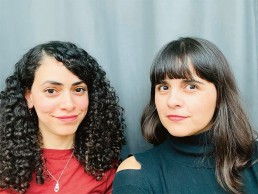
Maha Shalaby & Isabel Villar
Since its first episode aired in July 2020, the Sustainable Lighting Design podcast has reached more than 2,000 listeners around the world. arc chats with hosts Maha Shalaby and Isabel Villar on the success of the series.
What is the podcast about?
We started the Sustainable Lighting Design Podcast in July 2020 as part of a research-in-practice project on sustainability and health and wellbeing in the lighting design process. In each episode we invite a guest to focus on a different aspect of how light and lighting design, through daylight and electric lighting, have an impact on us and our environment, for example by analysing their impact on energy efficiency, wellbeing, light pollution and circularity. We host researchers and practitioners aiming to spread their knowledge to a broader audience, and hope that the conversations help the lighting design community to close the gap between the research and practice worlds.
How was the podcast formed?
Initially we had the idea of interviewing researchers and people working with some of the aspects mentioned above and then publish these together with the final report of our research. But shortly after we started our project, we realised that it was going to take time to get these interviews published and therefore we needed to find a more rapid and agile way to share them, to ideally challenge the way we work now, and not in a couple of years. That, together with the start of pandemic, made us think that having a podcast would be a good idea.
Why did you decide to produce a podcast?
We thought that there were not so many podcasts on sustainability in lighting design, and that during the pandemic it would be the perfect format to listen to while working from home, without the need to pay visual attention. We also saw that digital presentations often take a long time for guests to prepare, and follow a very strict flow, while in the podcast one could interact more with the guest and be more spontaneous. All guests have been very positive about their episodes, and we think that part of the success is of course, their high competence in each subject, but also that they were more relaxed and spontaneous along the session.
Can you tell us more about the research-in-practice project?
We got the idea after working on a project that focused on different issues related to sustainability and wellbeing. We saw the lack of methods and processes that combine the work that a sustainability specialist and a lighting designer do across the design process. There was a lot of discussions about sustainability but very little experience on how, in practice, we should work together and how each other’s decision along the design process impacted the end result. After that project was finalised we were hungry for more, especially for finding methods to better integrate our services, and we applied for funding from Bertil & Britt Svenssons Stiftelse in Sweden to further look into this, and we were happy to have been granted the funding. Research-in-practice is rare in our field, but so relevant, especially on two levels, first developing methods and processes to close the big gap between research and practice, and second implementing, testing and evaluating these methods in real projects.
What are your main ambitions for this series?
Our ambition is to both give a novel platform for researchers to talk about their findings and to learn what practitioners can do to create better lighting for people with the least environmental impact, but also to inspire and spread the knowledge through the lighting design community and outside it. We hope to inspire people and to give them good arguments to tackle these questions in the design process and strengthen the importance of the work we do, lifting up the importance of good lighting and how we can contribute to a more sustainable and better future.
What has the response been like?
We are over the moon with the podcast’s exposure and the feedback. To be honest we had no expectations, we did this because we believed in it, and we believed in the message that our guests wanted to share. And so far, with only seven episodes, we have more than 2,000 plays, with people listening from all over the world, USA, Sweden, Germany UK, India, Mexico, Brazil, etc.
What’s next?
After the success of the podcast, which was one part in our research project (SLD), we are now continuing to work with the other parts of the project, as we aim to publish more case studies, in addition to some development studies that we have been working on in the past year. At the moment we don’t have any new episodes planned, but we might interview new guests in a couple of months. We also have the idea of opening the podcast to others who might have a subject of interest that touches on the same themes that we address and would like to interview someone. We are open to suggestions too, and if anyone is willing to collaborate with the podcast they are more than welcome to get in touch with us.



